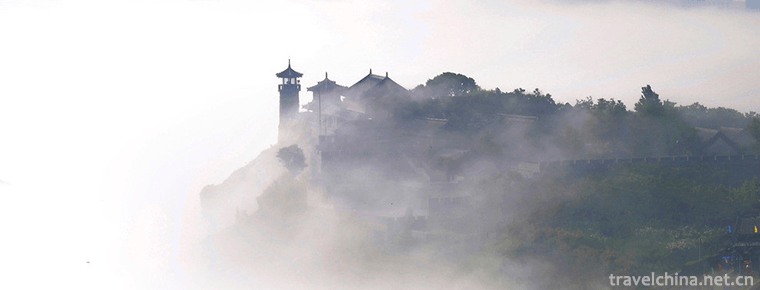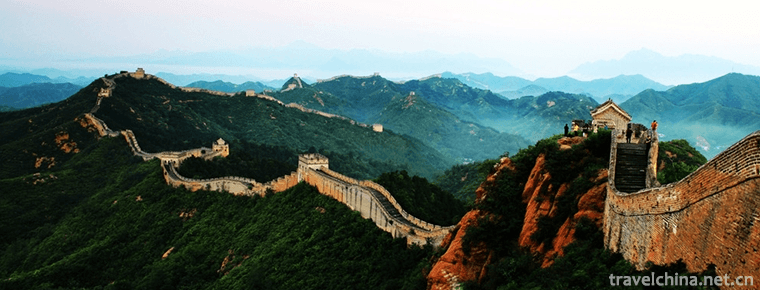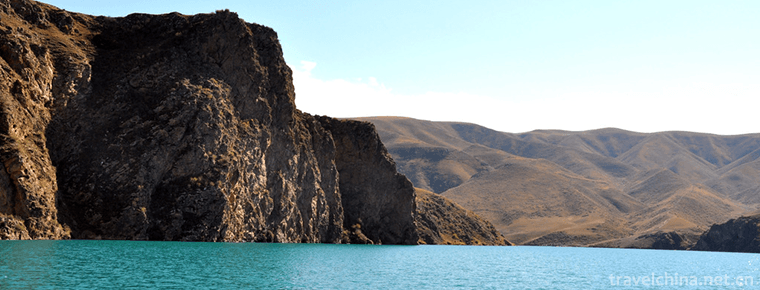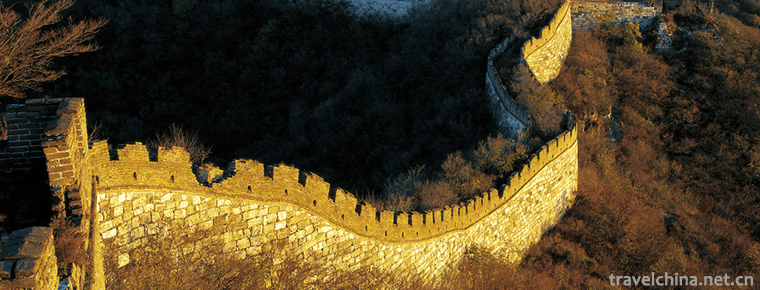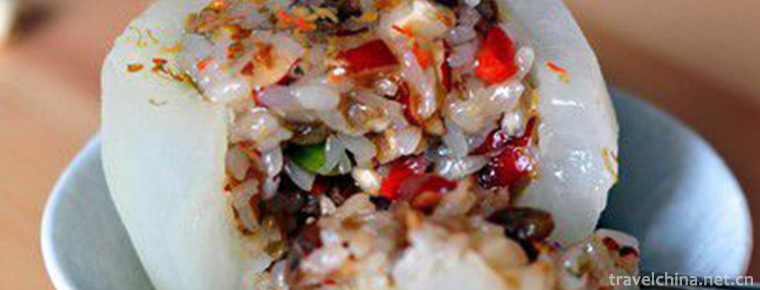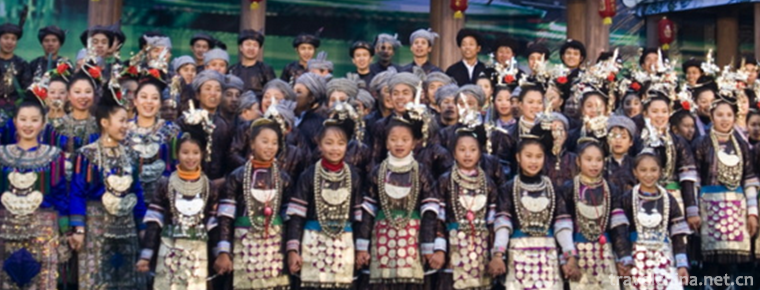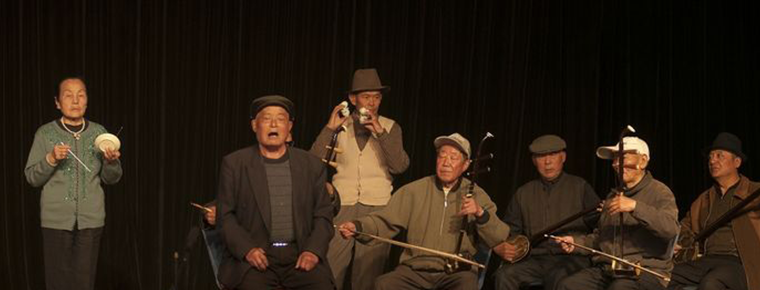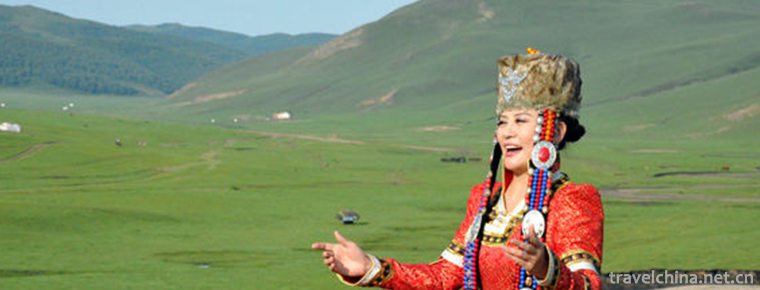Hunan embroidery
Hunan embroidery
Hunan Embroidery, a special product of Changsha City, Hunan Province, is a product of China's National Geographic Indications.
Hunan embroidery is one of the four famous embroidery in China. It is the general name of Hunan embroidery products with distinctive Hunan-Chu cultural characteristics centered in Changsha, Hunan Province. It originated from Hunan folk embroidery and developed with the advantages of Su embroidery and Guangdong embroidery. It has a history of more than 2000 years.
At the end of the 19th century, Wu Hanchen, son of embroidery worker Hu Lianxian, opened the first self-embroidery and self-selling Wu Caixia Embroidery Workshop in Changsha. On the basis of Hunan folk embroidery, he absorbed the advantages of "Su embroidery" and "Guang embroidery", and gradually Hunan embroidery embroidery was characterized by ginseng needle "Reference needle" is also called "random needle insertion", which corresponds to the same needle. The three-dimensional shape and halo effect of the object can be displayed. In the reference needle, there are also reference needles, straight reference needles, cross reference needles, wool needles, etc. There are also needle arrangement, traveling needle, flower needle, Crochet needle, hole needle, carving needle, beating and other needling methods. Its silk thread, after evaporation treatment of pod kernels, is smooth and smooth, with fine filaments, known as "wool embroidery". The style of Hunan embroidery is vivid and vivid, rich and bright in color, with a strong emphasis on the shade of Yin and Yang, changeable needling and meticulous splitting. Embroidery workers pay attention to "embroidery can produce fragrance, embroidery birds can hear, embroidery tigers can run, embroidery people can convey spirit". Embroidery also includes purse, pocket, pen insert, chair cushion, table circumference, pillowcase, tent cover, eaves, handkerchiefs, dress edges, skirt ornaments, belts and so on.
Hunan embroidery is characterized by rich levels of coloring and painted embroidery. There are Su Cat and Hunan Tiger among the people. Hunan embroidery lion and tiger hairlines are rigid, straight and vertical, eyes are god, can be chaotic, has developed to heterochromatic, heteromorphic, heteromorphic double-sided full heteromorphic embroidery. Hunan embroidery has participated in international expositions held in Japan, Panama, the United States and other places. It has won many awards and enjoyed high reputation in the international market.
On March 28, 2011, the former General Administration of Quality Supervision and Inspection approved the implementation of the protection of geographical indication products for "Hunan Embroidery".
Product characteristics
Overview
Hunan embroidery is a general term for embroidery crafts centered in Changsha, Hunan Province. In the modern sense, Xiang embroidery is mainly based on the folk embroidery techniques in Hunan, which integrates ancient court embroidery and scholar bureaucrat boudoir embroidery techniques and forms. At the same time, it also drew embroidery handicrafts from the essence of Suzhou embroidery and Guangdong embroidery and other embroidery seeds.
Hunan embroidery is mainly made of silk, pure silk, hard satin, soft satin, transparent yarn and various colors of silk and velvet. Its composition is rigorous and its color is bright. Various stitches are expressive. Through rich color lines and ever-changing stitches, the characters, animals, landscapes, flowers and birds embroidered have special artistic effects. No matter flat embroidery, weaving embroidery, net embroidery, knot embroidery, seed embroidery, velvet cutting embroidery, random embroidery and so on, all give full play to the expressive force of needling. Attention should be paid to delicately depicting the appearance and endoplasm of objects.
Hunan embroidery emphasizes realism, simplicity and grace, vivid image and combination of virtual and real structure. It skillfully integrates traditional Chinese painting, embroidery, poetry, calligraphy and stone arts.
Hunan embroidery has formed its own unique style in the long-term development process. His works have very high traditional handicraft value and regional cultural and artistic value; Hunan embroidery has vivid image, vivid color, both physical and spiritual, dynamic and static, with the reputation of "embroidered peanut fragrance, embroidered birds can hear, embroidered tigers can run, embroidered people can convey spirit", and has become Hunan and even China's "art card".
artistic characteristics
The artistic features of Hunan embroidery are vivid, lifelike and strong in texture. It is based on the drawing, replacing the brush with needle and halo with line, and recreating the art on the basis of deliberately pursuing the original appearance of the draft. Therefore, its unique skill lies in the application of needle and thread. Hunan embroidery needle method is changeable, mainly mixed needle, and according to the different requirements of expressing different image and natural texture of different parts, it has developed into more than 70 kinds of needle method. Lines are of various colors. According to the themes of different drawings, different stitches are used to select and match various embroidery threads of different colors-silk or wool. With the special expressive force of stitching and the luster of embroidery threads, the images produced by embroidery not only preserve the original charm of brush and ink, but also increase through embroidery technology. It adds the authenticity and three-dimensional sense of objects, and plays an artistic effect that is not equal to that of general painting. As a result, Hunan embroidery became a unique school. By the end of the Qing Dynasty, "Hunan embroidery was prevalent, surpassing Su embroidery, and did not follow Gu embroidery's name." In the process of changing blueprints and dyeing silk, it is not a step back.
"Taking needle as pen, jewel as paper and velvet as color", embroiderers play a great role in mixing needle and color, and skillfully blend various primary colors in texture and texture. Used for the transition of the same color from deep to shallow or from shallow to deep, expressing gradually changeable and uniform color gradation, creating a variety of brilliant, harmonious and pleasant colors. After embroidering with No. 1 dark line, when embroidering No. 2 dark line, the cohesion must be uneven, interlaced, and without trace, so that the color can be harmonious. The overlap line should not be too long or too long or too short. This is the basic difference between Hunan embroidery and other embroidery stitches. It has become one of the characteristics of Hunan embroidery.
The use of embroidery, thick and thin, different colors, and appropriate exaggeration. Hunan embroidery embroidery is a special skill. The thinness and delicacy of Hunan embroidery are inseparable from the increasing progress of this skill. With finger splitting line, can split to 2, 4, 8, 16, etc. After splitting the thread, there are countless strands, which can not distinguish the difference, but embroidery texture, to achieve the unity of contrast, highlight the theme, achieve the natural change of light and shade, Yin and Yang in one.
As one of the four famous embroideries in China, Xiang embroidery is centered on Changsha, Hunan. It is a embroidery handicraft developed on the basis of Hunan folk embroidery technology and absorbed the essence of Suzhou embroidery and Guangdong embroidery, thus forming its own unique style, emphasizing realism, simplicity and elegantly, and vivid shape. It is characterized by fine silk, then boiled with soap pod seed solution, wrapped up and wiped to prevent the hair from rising. Its light is finer than hair. Hunan embroidery is good at using dark and light gray and black and white in color matching, plus appropriate light and dark contrast, which enhances the texture and three-dimensional sense. It is good at utilizing the blank and highlighting the theme.
Variety theme
The main varieties of Hunan embroidery are: flowers and birds, landscapes, landscapes, figures, portraits, animals, strip screens, pamphlets, quilts, embroidered clothes, scarves, handkerchiefs, shawls and double-sided embroidery, double-sided embroidery, double-sided full-sided embroidery, large-scale fine-carved embroidery seat screens, hanging screens, etc. Hunan embroidery is commonly used in the image of peony, rose, camellia, chrysanthemum, plum, orchid, bamboo, etc. Birds are phoenix, peacock, pheasant, red-crowned crane, eagle, Mandarin duck, pigeon, myna, magpie, white head, animals are lions, tigers, horses, deer, cats, dogs, squirrels, pandas, and so on. Small flowers and grass, goldfish, butterflies, calligraphy and so on can not be embroidered.
Technological features
Drawing is the first process of Hunan embroidery. A good embroidery can not be separated from a good composition. At this time, whether the artistic understanding can be completely converted into layout in the designer's mind is a key link. A skilled manuscript artist can completely sketch a picture, pattern, or even a living object on a small wax paper according to the designer's consciousness.
Provisional manuscript
After the sketch outlined on wax paper, a small hair-like needle should be used to stitch out symmetrical holes according to the thread of the embroidery. After completion, the silk satin surface which has been cut is placed at the bottom of the paper manuscript, and the embroidery manuscripts are drawn out one by one.
Material selection
Definition: Choose the best material according to the type of embroidery and the requirement of process expression.
Principles: Select materials according to single-sided embroidery and double-sided embroidery; Select materials for ordinary and fine satin.
Main varieties and uses:
(1) Sukusatin: Hard Satin for short, is a kind of silk base material with thicker material, mainly white and beige. Because of its precious material, it is mainly used for embroidery of top-quality products and fine Hunan embroidery. Soft satin: soft material, mainly white, antique, mainly used for embroidery of ordinary embroidery.
(3) Transparent nylon, transparent silk: mainly white, mainly used for embroidery of the best, high-quality double-sided embroidery.
Printing plate
Printing Definition: The process of printing a manufactured stencil with ink to the substrate (satin).
Color matching
When the embroidery manuscript comes out, the rest is wiring. Generally, there are many kinds of colors and nearly 2,000 hues. It depends on the wiring artist's eyes to match the appropriate colors according to the designer's ideas. Introduction of yarn: yarn is mainly divided into silk, wool, gold and silver yarn. Introduction to the color of thread: Hunan embroidery thread is rich in color, which is one of the main characteristics different from other embroidery species. According to the Xuehuan Embroidery Spectrum, there are 9 kinds of primary colors, including green, yellow, red, black, white (above positive colors), green, ochre, purple, Jiaojiao and onion (above intermediate colors). 88 kinds of primary colors are made of 745 different colors because of their shade dyeing. Hunan embroidery workers believe that the sensitization effect of all objects may not be able to include more than 700 colors. Therefore, the use of color in Hunan embroidery can basically be called "all colors are available".
Decoration
Before embroidery, embroidery should be tightly stretched on an embroidery scaffold, pressed and stretched. In the process of embroidery, it is necessary to change the frame several times. According to the different embroidery, there are large, medium, small, tall, short, super large, hand stretching more than 20 models, and the general embroidery chooses medium-sized frame stretching.
Embroidery
Embroidery is a very important part of embroidery art. A good embroidery is inseparable from a skilled Hunan embroidery artist. Usually a Hunan embroidery artist has more than ten years'experience in embroidery to achieve the degree of embroidery fine works. Thousands of needles and threads swim on the embroidery manuscript, look at the thread and select the thread. Usually a Hunan embroidery artist has more than ten years' experience in embroidery to achieve the degree of embroidery fine works. Needles, broken threads, every thread has its merits.
Demolition
Removal of tension is easier than embroidery. Remove the embroidery carefully and remove the excess wool and thread head. Relax the embroidery already embroidered and remove it. But the whole process requires great care.
Embroidery
Introduction of Acupuncture:
A. Uniform needling: Uniform needling is one of the basic needling methods of Hunan embroidery, and also the basis of various needling methods. The needle method of flat embroidery is: the rising and falling needles should be on the edge of the pattern, the lines are arranged evenly, and can not overlap tightly, rare can not expose the bottom, and strive for neatness. Flat embroidery can be divided into straight, horizontal and oblique embroidery according to silk texture, that is, straight, horizontal and oblique embroidery.
B. Santao: Santao is one of the most commonly used and widely used stitches in appreciation. Its main features are isometric lines, uneven arrangement, overlapping skin and needles. Because of its flexible organizational form, free silk turning, thick and smooth inlay, delicate and smooth embroidery, it can show the vivid posture of flowers, grass, feathers and so on in detail.
C. Stitching: Stitching is the main stitching method for embroidering human figures, animals, birds, etc. It is characterized by gradual encryption with thin needle layers, easy inlaying, natural silk turning, flexible line organization.
D. Acupuncture of deficiency and reality: It is composed of lines of deficiency, deficiency and reality. The lines are uneven in length, from thick to thin, arranged from sparse to dense, and the stitches are gradually from long to short.
E. Chaotic embroidery has become a unique new variety because of its strong expression. Chaotic needle embroidery seems chaotic, in fact, chaotic needle: chaotic and regular, it is made of straight and horizontal skew lines with different lengths and lengths, which can be blended once and again. Because the lines are organized in a cross-shaped structure, the intrinsic colors of various color lines can still be retained after blending. The number of color blending is not limited until the light, color and shape meet the requirements.
F. Putting dots: Putting dots is one of the traditional stitches, which was used to embroider daily necessities in history. After liberation, embroidery workers creatively used it to embroider appreciative articles, and the effect was very good. Dot embroidery is based on yarn, oblique embroidery according to the warp and weft points of the yarn lattice, one needle at each point, gathered together.
G. Stamping yarn: Stamping yarn is also one of the traditional stitching methods. It is used to embroider people's clothing. It has a strong decorative effect. Stamping yarn is based on yarn and is composed of many small geometric patterns.
H. Connector: The short needle is connected back and forth continuously, and the back needle is connected to the end of the front needle in a strip.
I. Needle rolling: Two threads are twisted tightly, connected into stripes, and the line turning is more flexible. It is more appropriate to embroider straight lines or curves.
J. Beating: It is also one of the traditional embroidery stitches, that is, to make a small circle of grains with lines to form an embroidery surface. Because every needle of embroidery sees one particle, it is called "beating embroidery". In appreciation, it is mostly used to embroider the heart; or it is used to embroider still life alone, such as flower baskets.
K, stitching and needling: the needle organization is similar to the loose stitching, but the difference is that the loose stitching overlaps and the stitching and the stitching are flat. The stitches of loose needles are concealed between the lines, and the stitches of pins and needles are relatively exposed. Kneads and needles are mostly used to embroider tree trunks and stones in embroidery appreciation.
1. Set sleeve: Set sleeve is the needle method of embroidering circular pattern, which is carried out in the order of equal-length and uneven line skin division. When embroidering, the back line is embedded in the middle of the front line, and the silk is clamped together, and then the end of the previous line is connected. Every stitch should be aimed at the center of the circle, and a hidden needle should be made near the center of the circle.
M, Zheng Zheng: It is formed by linking up the front and back of the whole needle and dividing skin, and proceeds in order from outside to inside.
N. Anti-robbery: It is formed by linking up the front and back of the whole needle and dividing the skin. It is carried out regularly from inside to outside. The direction of silk is the same, and the skins are connected with each other.
O. Hair embroidery: Hair embroidery has strong expressive power, mainly used in cat embroidery, until the light, color and shape meet the requirements of cats.
Ironing
After embroidery is finished, it should be ironed. Because embroidery thread can reflect the silk luster better under the high temperature of more than one hundred degrees. Let the whole embroidery full of dynamic and vitality.
Decorative mounting
Any Hunan embroidery works of art can not be separated from elaborate decoration and mounting. It is also the final process of embroidery. Usually, an embroidery should match the composition and color of the embroidery in the choice of mounting and frame.
Value Significance
historical value
Hunan embroidery, as an ancient and traditional folk hand embroidery technique, has strong local cultural characteristics. It has been handed down from generation to generation for more than 2,000 years. It is not only a wonderful flower in the forest of art, but also a cultural and artistic treasure of the Chinese nation. It is also an outstanding representative of Huxiang culture. It has the reputation of "magical art" and "the most precious embroidery".
artistic value
As a unique traditional culture and art, Hunan embroidery has extensive and profound artistic connotation. Embroidery artists use needle instead of pen and thread as color to merge traditional Chinese painting art into Hunan embroidery. Through needle and thread, they integrate many kinds of arts, such as figures, landscapes, flowers and birds, animals, calligraphy and painting, calligraphy and stone, and create art again, so as to make embroidery more vivid, strong texture and lifelike.
Brand Value
Hunan embroidery, as the essence of Hunan Province, has a long history and is well-known both at home and abroad. And many times as a national gift to foreign heads of state and dignitaries. It is praised as "fantastic hands, wonderful works".
commercial value
Hunan embroidery series products are well-known both at home and abroad for their traditional craftsmanship characteristics and unique cultural connotation of the Chinese nation. They are widely used in gifts, decoration, collection and clothing, clothing, headscarves and bedding. They are sold to more than 20 countries and regions in Europe, America, Asia, Africa, Hong Kong, Macao and Taiwan. From the early days of the founding of the People's Republic to the reform and opening-up policy. Initially, it was the pillar industry of Hunan's export. The protection and development of Hunan embroidery can not only promote Chinese culture and revitalize traditional industries, but also greatly solve the employment of rural women's labor force and contribute to local economic construction.
Screening options
Hunan embroidery products can be divided into collections, top-quality products, general products (qualified products) according to the novelty of their original manuscripts, the precision of embroidery, the luxury of decoration and their appreciation value and collection value. The process quality is generally summarized in these words: flat, neat, clean, bright, dense and lively. The more they do, the higher the grade. It also requires that the silk thread used in the product is rich and delicate in luster, full and lasting in color and toughness. The embroidered floor is light and not easy to deform and break down. Embroidery design is elegant and exquisite. The embroidered works are smooth, fine, even, smooth, bright, spiritual, non-rigid, with soft luster of silk thread. The works have the characteristics of non-decaying, non-decaying and non-fading.
Origin Environment
Changsha does not produce silk. Archaeological findings show that the ancient silkworm mulberry area in Hunan is located in the Lingling and Hengyang areas in the upper reaches of the Xiangjiang River. For more than 300 years during the Tang and Song dynasties, the two regions had to pay tribute to the ruling class, or even 20,000 feet a year. Later, due to the excessive deforestation by the court officials in successive dynasties, soil erosion caused southern Hunan to become a red soil arid zone, and the once prosperous sericulture production disappeared invisibly. The survival of silkworm "live by water and grass", along the Xiangjiang River, to the Dongting Lake area. At the beginning of Yuan Dynasty, cotton planting was rapidly promoted. Yueyang, Changde, Yiyang and other areas along Dongting Lake were very important silk and cotton producing areas in China. The silkworm, wood and cotton bases along Dongting Lake, such as Yueyang, Changde and Yiyang, are important guarantees for the success of Hunan embroidery.
historical origin
Hunan embroidery has a long history, which can be traced back to the Spring and Autumn Period and the Warring States Period 2000 years ago. From the large number of embroidery unearthed from Chu Tomb of Changsha Warring States Period and Mawangdui Tomb of Western Han Dynasty, we can see that the local embroidery skills in Hunan had reached a surprising height at that time. In 1958, the exquisite patterns of dragon and Phoenix embroidery and the delicate embroidery techniques found in the Chu tomb in Changsha have long been amazing to the world.
In 1972, more than 40 pieces of embroidery clothes were unearthed from Mawangdui Western Han tomb in Changsha. This shows that the local embroidery in Hunan, that is, Hunan embroidery, has developed to a higher level in the Western Han Dynasty, more than 2100 years ago. "The brilliant Chu embroidery and Mawangdui Han embroidery are not only a chapter full of pride and pride in the history of Chinese embroidery, but also the source of the original development of Hunan embroidery."
On the basis of Hunan folk embroidery, Hunan embroidery also absorbed the advantages of Su embroidery, Guangdong embroidery, Beijing embroidery and other embroidery systems, and developed into a rising star of the Qing Dynasty embroidery art garden. Hunan embroidery is developed on the basis of Hunan folk embroidery. Hunan folk can embroider very early. During the Jiaqing period of the Qing Dynasty, there were many women engaged in embroidery in Changsha County. In the 24th year of Guangxu (1898), Wu Hanchen, the son of embroiderer Hu Lianxian, opened the first self-embroidery and self-selling Wu Caixia Embroidery Workshop in Changsha. The works are exquisite and widely circulated. Hunan embroidery is famous throughout the country. During the Guangxu period, Ningxiang painter Yang Shizhuo advocated Hunan folk embroidery. He went deep into embroidery workshops for a long time and drew embroidery manuscripts. He also created a variety of stitches and improved the level of Hunan embroidery art. At the end of Guangxu period, Hunan folk embroidery developed into a unique embroidery technology system, and became a handicraft commodity with independent style and strong local color into the market. Professor Tian Zibing pointed out in his book The History of Dyeing and Weaving in China: "The history of Hunan embroidery was generally believed to have originated in the early years of the Qing Dynasty and came out the latest. However, since the exquisite embroidery of Han Dynasty, such as silk longevity embroidery, silk cloud embroidery and Luo Qidi Xinshi embroidery unearthed from No. 1 Tomb of Mawangdui in Changsha in 1972, a new understanding of its history has been gained. It can be said that Hunan embroidery formed a unique style of embroidery system in the late Qing Dynasty. And the name "Hunan embroidery" began to be known in the world at this time.
In the 1930s, the output value of Hunan embroidery reached 800,000 silver yuan, and one third of its products were exported. In the 24 years of the Republic of China (1935), Hunan embroidery occupied half of the space in the section "Embroidery" of the General Report of the West Lake Exposition.
Since the founding of New China, the development of Hunan embroidery has gone through three stages: the "golden period" of the 1950s. With the help of Chairman Mao Zedong's visit to the "East Wind" of the Soviet Union with a large number of Hunan embroidery products such as Stalin Embroidery, Hunan embroidery products ushered in the first export climax for the Soviet Union and Eastern Europe. After the breakdown of Sino-Soviet relations, the export of Hunan embroidery was once hindered and production fell to a low ebb.
In the early 1970s, it entered the period of industrial adjustment. Hunan embroidery for daily use and decorative embroidery have been developed simultaneously. At the same time, the export to the Soviet Union has been transferred to the entrepot trade with Hong Kong. In the early 1980s, the situation of "four major manufacturers of Hunan embroidery" emerged, forming a second development climax. Until 1987, Hunan embroidery was the largest export earner in Hunan light industry.
In the early 1990s, it entered the period of "contention among hundreds of schools of thought". With the rise of township enterprises and individual economy, there are only one of the "four major enterprises", and the rise and fall of enterprises become normal.
At the beginning of the 21st century, Hunan embroidery was listed in the first batch of intangible cultural heritage protection projects in China. Around 2012, the embroidery industry in Hunan recovered again, but for a short time.
Production situation
Hunan embroidery has a history of more than 2500 years. In the early Western Han Dynasty, the embroidery technology in Hunan was highly developed, but it disappeared inexplicably after the Han Dynasty. Until the Guangxu period of the Qing Dynasty, the Pingjiang embroidery girl Li Yihui pioneered the method of blending needles, which made the Hunan embroidery rise again. In 1898, the opening of "Wu Caixia" embroidery village in Changsha marked the way for Hunan embroidery to be commercialized.
In 2008, the annual output value of Hunan embroidery exceeded 500 million yuan, with an annual total export volume of more than 1.2 million pieces (sets), driving nearly 6,000 rural employees. Among them, Xingsha Xiangxiu Industrial Park has introduced more than 60 related enterprises, more than 500 business operators have been completed, forming an annual production and sales scale of 1 billion yuan, and driving about 30,000 employees.
In 2010, the total output value of Xiangxiu embroidery in Shaping reached 150 million yuan.
In 2010, the annual output value of Shapingxiang embroidery reached 100 million yuan.
In 2012, there were more than 100 related enterprises in Hunan embroidery industry, with 8 Chinese and 12 Hunan arts and crafts masters, nearly 200,000 employees, with an annual output value of over 500 million yuan.
Product Honor
In 1910, Hunan embroidery was praised at the Nanyang Trade Promotion Conference as "ink without trace" and "letters, hairpins and thread without trace".
In 1995, Shaping Town of Changsha was awarded the title of "Township of Hunan Embroidery in China" by the State Council.
In 2006, Hunan embroidery was selected as the first national intangible cultural heritage list.
In 2006, Shaping was awarded the protection and inheritance base of intangible cultural heritage of Hunan embroidery country.
On March 28, 2011, the former General Administration of Quality Supervision and Inspection approved the implementation of the protection of geographical indication products for "Hunan Embroidery".
In 2014, Hunan Xiangxiu Research Institute was listed by the Ministry of Culture as the second national demonstration base for the productive protection of intangible cultural heritage.
geographical indication
Scope of geographical protection
Hunan Embroidery (Shaping Production Area) is produced in Shaping Community, Chazishan Village, Zi'an Village, Zhongshi Village, Jinxia Village, Success Village, Zhupo Village, Gaotang Village, Haitang Village, Shuanghu Village, Hanhui Village, Wuxi Village, Guangsheng Village, Da'an Village, Bantang Village, Daming Village, Daxing Village, Baixia Village and Zhongling Village, Changsha City, Hunan Province. Luohanzhuang Village, Wujialing Village, Gaoyuan Village, Kaoling Village, Laodaohe Village, Fengyu Village, Laodaohe Community, Pengjiaxiang Community, Sun Mountain Community, Qunli Community, XiaNing Community, Tianjing Community, Xinyuan Community, 32 Natural Villages and Community Towns now have jurisdiction.
Quality Technical Requirements
(1) Requirements for raw materials.
1. Silk yarn quality requirements: silk yarn is treated with local soap pod seed solution, and then a silk thread is split into 1/2, 1/4, 1/8, 1/16 or even finer according to different patterns. The number of filaments split by one thread is not less than 16 and 128 wool.
2. Material quality requirements: high-quality warehouse satin, soft satin or soft white canvas, and meet the national quality and technical requirements.
(2) Screen requirements.
1. Embroidery pattern: healthy and aesthetic.
2. Embroidery patterns: legitimate patterns that may not infringe upon the intellectual property rights of others.
3. Patterns: Painting, photography, calligraphy and other works of art.
(3) Process requirements.
The production is carried out by the process of making manuscripts, selecting materials, matching colors, decorating bandages, embroidery, disassembling bandages, ironing, decorating and mounting, and inspecting with the pure handicraft traditional craft of Hunan embroidery.
(4) Needling requirements.
Hunan embroidery has 72 traditional needling methods. It can be divided into five categories: plane embroidery, weaving embroidery, net embroidery and knot embroidery. There are also curly needles and random needles which have been developed and perfected.
1. Flat embroidery: the embroidery method of placing the surface with thread.
2. Weaving and embroidery: embroidery in which threads are interwoven into a certain shape.
3. Mesh embroidery category: is based on various color lines interrelated, netted.
4. Twist embroidery: It is a pattern composed of twisted threads and links, which is suitable for embroidering small articles of daily necessities and clothing.
5. Knot embroidery type: is to knot the thread into granular or circular shape, forming graphics or local patterns.
All kinds of needling methods should be applied according to the requirements of the picture. The needle should be arranged in an orderly way without revealing the bottom. No needle-eye seam, natural color matching and wireless head should be allowed in the embroidery base material.
(5) Mounting requirements.
1. Soft mounting: The cut embroidery pieces should be mounted with silk brocade, with clear patterns, good texture, no bubbles, no shelling, continuous cracking, accurate angle, straight threads, regular patterns and neat whole.
2. Hard mounting: The cut embroidery pieces should be glued on the three partitions or fiberboard, and the embroidery pieces should be mounted with cardboard around them. When mounting, it should be decontaminated, clear, flat, neat, no paste, no dirty spots. The frame and frame specifications are correct. The paint is bright and the essential surface is free of scars and spots. The ratio of embroidery part to mounting area should not be less than 70%.
(6) Quality characteristics.
1. The silk thread used in the product is rich and delicate in luster, full and lasting in color, and has toughness. The silk with embroidered bottom is light and not easy to deform and break down. Embroidery design is elegant, meticulous, soft and lustrous with silk thread. Embroidery works are smooth, fine, uniform, smooth, harmonious, light, spiritual and non-rigid, which is different from machine embroidery. The works have the characteristics of non-decaying, non-decaying and non-fading.
2. Safety and other quality technical requirements: The product safety and other quality technical requirements must conform to the relevant national regulations.
Use of special logo
Producers in the production area of Hunan embroidery (Shaping production area) may apply to the Bureau of Quality and Technical Supervision of Kaifu District, Changsha City, Hunan Province for the use of "Geographical Indicators Product Specific Marks". The application is examined by the Hunan Provincial Bureau of Quality and Technical Supervision and submitted to the General Administration of Quality Supervision and Inspection for approval before it is announced. The statutory inspection institution of Hunan embroidery (Shaping production area) is designated by Hunan Provincial Bureau of Quality and Technical Supervision.

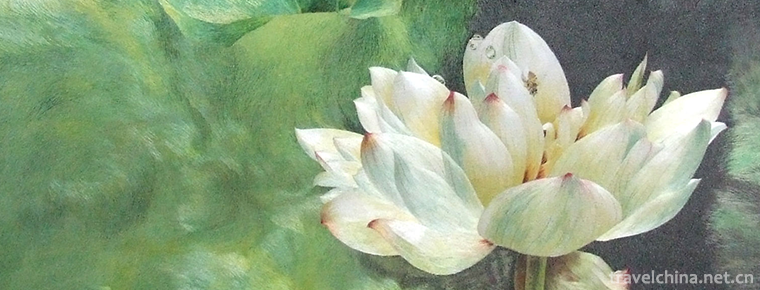
-
Penglaige tourist area
Penglaige Scenic Area, located in Danya Mountain, northwest of Penglai City, Shandong Province, is a national AAAAA-level tourist attraction with an area of 18,500 square meters.
Views: 105 Time 2018-12-08 -
Karajun Scenic Area
Karajun is Kazakh, meaning "the wilderness on the ridge". Karajun Mountain is a stretch of mountains from east to west. On both sides of it are hills with ravines and combs.
Views: 156 Time 2018-12-12 -
Jiankou Great Wall
The Great Wall is located in Badaohe Township, northwest of Huairou District, Beijing suburb. It is 1141 meters above sea level and about 30 kilometers away from Huairou County..
Views: 237 Time 2019-01-21 -
Eight treasure pear pot
Babao pear can is a delicious name, belonging to Shandong cuisine. Babao pear cans are exquisitely made and beautifully shaped, mostly for beets at banquets. If high-grade banquet, can be filled in sm.
Views: 236 Time 2019-03-26 -
the Dong chorus
Originated in the Spring and Autumn Period and the Warring States Period, the Dong Grand Song has a history of more than 2500 years. It is a folk chorus form with multi-voice.
Views: 165 Time 2019-04-27 -
Five Palace Tunes in Haizhou
Haizhou Five Palace Tunes is a traditional folk music with a long history. It is an important link of Ming and Qing folk songs in Jiangsu Province. It is a precious relic of ancient "Zhugong Tune.
Views: 109 Time 2019-05-02 -
Mongolian Long tune Folk Songs
Mongolian long-tune Mongolian is called "Uri Tudao", which means long song. It is characterized by fewer words, long-lasting, soothing and free, suitable for narration, and longer lyric. .
Views: 194 Time 2019-06-04 -
Nuuziz Festival
The word "Nuruzi" comes from the ancient Iranian language and means "spring rainy day". On March 21 of each year, like the Spring Equinox, it means the arrival of spring. Uygur, Ta.
Views: 285 Time 2019-06-08 -
Luzhou economy
In 2019, the GDP of Luzhou will reach 208.13 billion yuan, an increase of 8.0% over the previous year, 1.9 percentage points higher than the national average level (6.1%) and 0.5 percentage points higher than the provincial average level (7.5%). Among them, the added value.
Views: 340 Time 2020-12-14 -
Suining Education
By the end of 2019, Suining had 911 schools of all levels and types, with 440000 students and 32000 full-time teachers. Among them, 196 primary schools enrolled 30600 students and 180600 students; 130 junior high schools, 28300 students and 78400 students.
Views: 362 Time 2020-12-16 -
Leshan tertiary industry
In 2019, the total retail sales of social consumer goods in Leshan City reached 73.87 billion yuan, an increase of 10.7% over the previous year. According to the statistics of places of operation, the retail sales of consumer goods in cities and towns .
Views: 350 Time 2020-12-17
